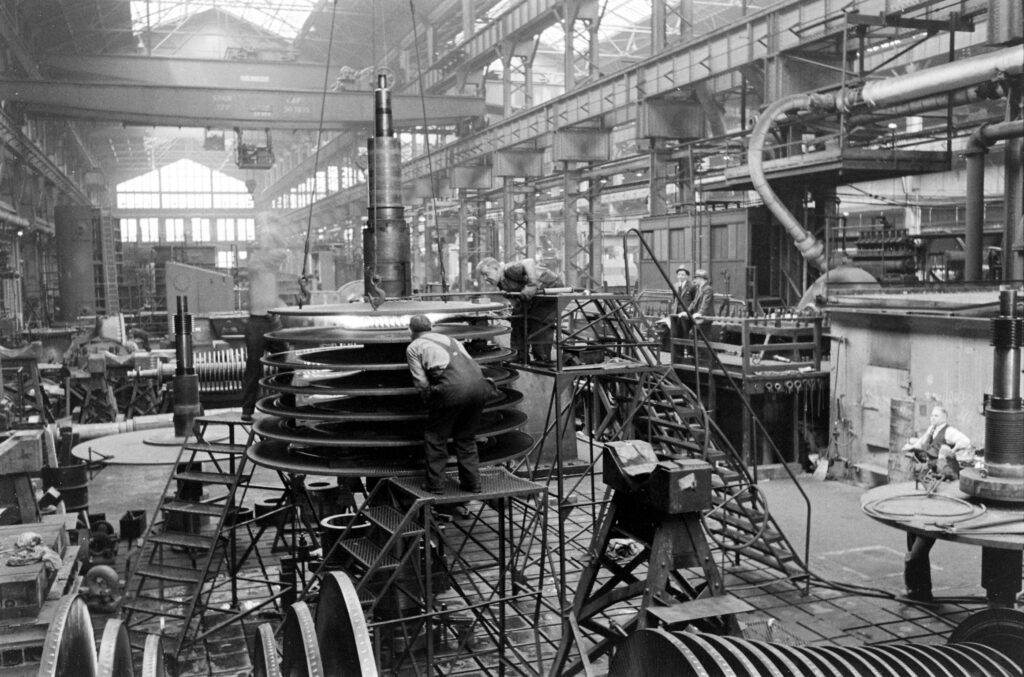Great sports photography is an art of its own, and there are few chances to practice that art like the Olympics. As the world’s athletes gather to compete, so too do the photographers who capture them in action.
During LIFE Magazine’s decades as a source of the world’s most iconic photography, the magazine covered its fair share of Olympics. The images produced are as varied as the sports they portray. The photographs show the quiet moments before the race begins. They show the concentration and strength needed to win and the joy of knowing you might have done so. They show the graceful, almost abstract, forms of bodies in motion, and the iconic moments when athletes become legends.
Here’s a look back at some of the best LIFE Magazine photography from the summer Olympics.

LIFE magazine Olympic covers through the years.
LIFE Magazine

Jamaican athlete Herb McKenley standing on a track at the 1948 summer Olympics in London.
William Sumits The LIFE Picture Collection/Shutterstock

Competitors diving into pool during swimming events at the 1948 summer Olympics in London.
Ed Clark The LIFE Picture Collection/Shutterstock

US decathlon winner Robert B. Mathias waiting for turn at pole vault at the 1948 summer Olympics in London.
Ed Clark The LIFE Picture Collection/Shutterstock

Czech track and field gold medalist Emil Zatopek leading pack during the 1952 Olympic games in Helsinki, Finland.
Mark Kauffman The LIFE Picture Collection/Shutterstock

Cycling at the 1952 summer Olympics in Helsinki, Finaland.
Ralph Crane The LIFE Picture Collection/Shutterstock

Athletes competing in the 10,000-meter walk at the 1952 summer Olympics in Helsinki, Finland.
Mark Kauffman The LIFE Picture Collection/Shutterstock

Robert B. Mathias attempting the pole vault at 1952 summer Olympics in Helsinki, Finland.
Mark Kauffman The LIFE Picture Collection/Shutterstock

Gunhild Larking, Sweden’s entry for the high jump, clearing the high bar during the 1956 summer Olympics in Melbourne, Australia.
George Silk The LIFE Picture Collection/Shutterstock

Fencers competing in the 1956 summer Olympics in Melbourne, Australia.
John Dominis The LIFE Picture Collection/Shutterstock

US Runner Wilma Rudolph winning women’s 100-meter race at the 1960 summer Olympics in Rome.
Mark Kauffman The LIFE Picture Collection/Shutterstock

German Armin Harry (C) during men’s 100-meter dash event at the 1960 summer Olympics in Rome, Italy.
George Silk The LIFE Picture Collection/Shutterstock

U.S. platform diver Frank Gorman competing in the 1964 summer Olympics in Tokyo, Japan.
Art Rickerby The LIFE Picture Collection/Shutterstock

U. S. swimmers competing during the 1964 summer Olympics in Tokyo.
Art Rickerby The LIFE Picture Collection/Shutterstock

American track stars Tommie Smith (C) and John Carlos (R) standing on podium after winning gold and bronze Olympic medals, respectively, raising black-gloved fists, in support of civil rights/black power, while Australian silver medalist Peter Norman stands by at the 1968 summer Olympics in Mexico City.
John Dominis The LIFE Picture Collection/Shutterstock

US swimmer Mark Spitz training for the 1972 summer Olympics in Munich, West Germany.
Co Rentmeester The LIFE Picture Collection/Shutterstock

US wrestler eventual gold medal winner Wayne Wells (top) overpowered West German Adolf Seger in freestyle welterweight elimination match at the 1972 summer Olympics in Munich, West Germany.
Co Rentmeester The LIFE Picture Collection/Shutterstock

US track athlete Steve Prefontaine running a race at the 1972 summer Olympics in Munich, West Germany.
Co Rentmeester The LIFE Picture Collection/Shutterstock

U.S. gymnast Ludmila Turishcheva in action on the vault at during the 1972 Summer Olympics in Munich, West Germany.
John Dominis The LIFE Picture Collection/Shutterstock

Kenyan track star Kipchoge Keino finishing ahead of teammate Ben Jipcho (574) in the 3,000-meter steeplechase final at the 1972 summer Olympics in Munich, West Germany.
John Dominis The LIFE Picture Collection/Shutterstock












































































































